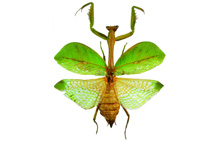Abstract
Species of the extinct family Dysmorphoptilidae with distinctly punctate and emarginate tegmina are one of the most characteristic elements of the hemipteran fauna of the three Queensland Triassic fossil insect-bearing formations—the Middle Triassic (Anisian) Gayndah Formation at Gayndah, the Late Triassic (Norian) Mount Crosby Formation at Mount Crosby, and the Late Triassic (Norian) Blackstone Formation at Mount Crosby and Dinmore. Eight species in five genera have been identified: Mesocixius triassicus Tillyard, 1919 (Denmark Hill), Mesocixius parvus (Evans) comb. nov., 1956 (Mount Crosby), Triassocixius australicus Tillyard, 1919 (Denmark Hill), Carsburgia knezouri gen. et sp. nov. (Dinmore), Dysmorphoptiloides elongata Evans, 1956 (Mount Crosby), Dysmorphoptiloides ellisi sp. nov. (Gayndah), Tennentsia princeps sp. nov. (Mount Crosby), and Tennentsia evansi sp. nov. (Gayndah). Synapomorphies are proposed to suggest that Triassocixius, Carsburgia, Dysmorphoptiloides and Tennentsia are monophyletic. Mesocixius may be paraphyletic, its two species sharing only apparently plesiomorphic characters. The limits and relationships of the over 15 described world genera of the Dysmorphoptilidae remain poorly known, but examination of the Queensland species has identified several characters which may be of cladistic value: the presence or absence of a strigil, the degree of tegmen emarginations and form of the resultant apical lobe, the presence and form of swellings on the claval margin, the pattern of tegmen punctation, the relativities of the primary forks of R and RA, the branching pattern of RA1, the branching and orientation of RA2,and the presence or absence of a fusions between RA and RP distally and between M and CuA basally

